Introducing Bioengineering in Kindergarten
CRISPEE is a tangible tool for young children ages 5-8 to explore the metaphor of a coding language for living organisms. Through a developmentally appropriate tool and curriculum resources, children can explore concepts from bioengineering and gene-editing a. CRISPEE was developed as part of an NSF-funded Making the Invisible Tangible research project (NSF Grant No. 1564018) and pilot-tested at early childhood museums and learning settings around the Greater Boston area from 2017 to 2019. This project is a collaboration between the DevTech Research Group at Tufts University and the Wellesley College Human-Computer Interaction Lab.
Research

Bioengineering is a cutting-edge interdisciplinary STEM field at the forefront of scientific progress, combining the fields of engineering and microbiology to create biologically-based solutions to real-world problems. Young children (ages 5-8 years) are at a critical age to explore the world around them through a multidisciplinary lens, and educational advances in other domains (engineering, technology, and computer science) have shown that children as young as age 4 are capable of learning core concepts of bioengineering. In this National Science Foundation-funded project (NSF Grant No. 1564018), DevTech has partnered with Wellesley College’s Human Computer Interaction Lab to develop a suite of tools for ages K-12 to explore foundational concepts of synthetic biology. CRISPEE is a tangible, developmentally-appropriate tool to introduce the youngest children to foundational concepts of bioengineering. Our current CRISPEE prototype is modeled on the real-world CRISPR/Cas-9 gene editing system, and allows children to play with genetic programs to solve real-world problems using an ethical design lens.
Publications and Papers: Below is a list of publications related to CRISPEE and bioengineering. For a comprehensive list of DevTech publications, please visit the DevTech Publications Page.
Doctoral Dissertations on CRISPEE:
Strawhacker, A. L. (2020) Biodesign Education in Early Childhood: A Design-Research Study of the Tangible CRISPEE Technology and Learning Intervention. (Doctoral dissertation). Tufts University, Medford, MA. Order No. 27962318 Tufts University, 2020. Ann Arbor: ProQuest. Web. 2 Aug. 2020.
Research Publications on CRISPEE:
Strawhacker, A., Verish, C., Shaer, O., & Bers, M. U. (Under Review). Designing with Genes in Early Childhood: An exploratory user study of the tangible CRISPEE technology. International Journal of Child-Computer Interaction.
Strawhacker, A., Verish, C., Shaer, O., & Bers, M. U. (2020, April). Debugging as Inquiry in Early Childhood: A case study using the CRISPEE prototype. In K. Mills (chair), Computational Thinking for Science Learning. Symposium conducted at the Annual Meeting of the American Educational Research Association (AERA), San Francisco, CA. Conferenced cancelled due to COVID-19.
Strawhacker, A., Verish, C., Shaer, O., & Bers, M. U. (2020). Young Children’s Learning of Bioengineering with CRISPEE: A Developmentally Appropriate Tangible User Interface. Journal of Science Education and Technology, 1-21.
Verish, C., Strawhacker, A. Bers, M. U., & Shaer, O. (2018, March 18-21). CRISPEE: A Tangible Gene Editing Platform for Early Childhood: Proceedings of the Twelfth International Conference on Tangible, Embedded and Embodied Interaction (TEI), Stockholm, Sweden. New York, NY: ACM.
Curriculum Resources
In addition to developing CRISPEE, our team has created pilot curricular resources, including lesson plans with practice recommendations for exploring bioengineering and a storybook to introduce children to the CRISPEE tool, and a series of activities, worksheets, and anchor charts to reinforce key concepts of bioengineering.

Pilot CRISPEE Curriculum: A draft of all curricular activities used in the pilot CRISPEE interventions.
Resources
Although the CRISPEE prototype is not available outside of Tufts and Wellesley, we have made the construction guide for the latest prototype available to review below. We hope that engineers, designers, and researchers may benefit from this public document, and perhaps even recreate parts of the prototype in their own makerspace or lab setting:
Media Gallery
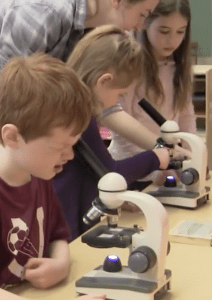
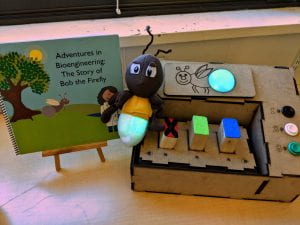
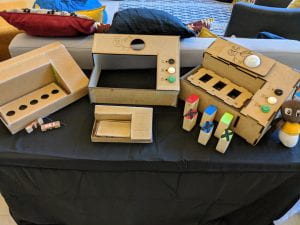

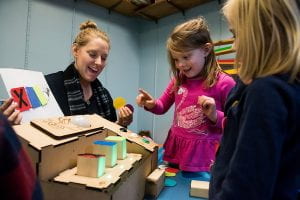
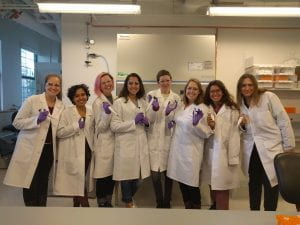


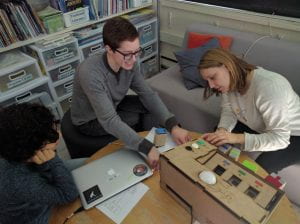
Team
The CRISPEE research project was first conceived and designed by Prof. Marina U. Bers of Tufts University and Prof. Orit Shaer of Wellesley College, as part of the NSF-funded Making the Invisible Tangible research project (Grant No. 1564018).
Tufts Students, Staff, and Researchers:
Alejandro Colina-Valeri, Dr. Amanda Strawhacker, Dr. Amanda Sullivan, Anastasia Goulopoulos, Annie Du, Danielle Kong, Edward Futterman, Emily Lin, Isha Patnaik, Maya Kurzman, Meha Elhence, Naomi Durand, Shunta Muto, Soo Bin Yang, and Yeeun Christina Koo
Wellesley Students, Staff, and Researchers:
Dr. Anna Loparev, Clarissa Verish, Diana Tosca, Jasmin Davis, Jennifer Otiono, Lauren Westendorf, Margaret Flemings, Michelle Gelberger, and Taina Paredes
Community Partners:
We gratefully acknowledge the facilitators and staff at the at the Boston Children’s Museum (especially the Tech Kitchen exhibit space), as well as the Eliot-Pearson Children’s School and the Eliot-Pearson Early Childhood Makerspace.
